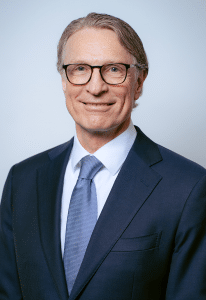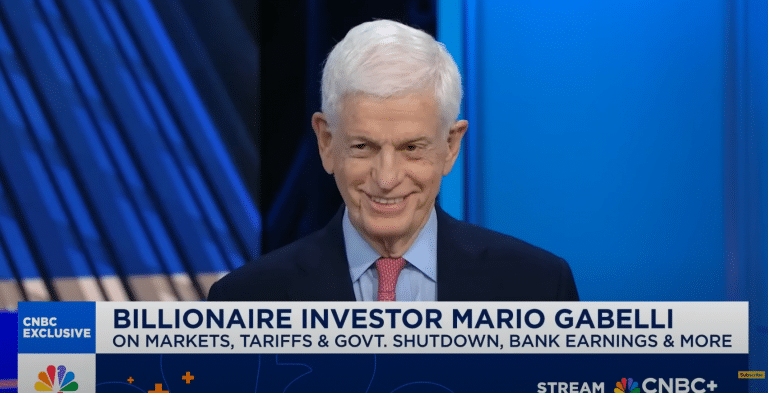October 2025
What You Need To Know
After Utilities had trailed the broader market (MSCI World index) in July and in August, Utilities stocks rebounded in September and beat the MSCI World benchmark by almost 1%. After the September rebound, the MSCI World Utilities finished Q3 2025 with a solid 4.6% gain (driven US Utilities, which gained 6.0% in Q3, while European Utilities closed the quarter with a small loss) but trailed the MSCI World index, which added 6.5% in Q3. Meanwhile, the S&P Global Clean Energy index jumped by another 7% in September, thereby extending the share price gain to 17.5% in Q3 and to 34.3% YTD in 2025 (after suffering heavy losses in the previous four years). Despite underperforming the broader market in Q3 2025, Utilities stocks are still outperforming the MSCI World benchmark index by a noticeable margin of almost 400 bp YTD in 2025 (see Table 1) as Utilities stocks in Europe and in the US continue to post double-digit returns in 2025 (of 17.1% and 13.2%, respectively).
Table 1 Index Performances
The strong YTD performance of our equal-weighted European Utilities sub-sector indices (all posting double-digit gains YTD, except for “UK Water Utilities”) mirror the YTD outperformance of European Utilities in 2025. Expected earnings growth from adding renewable power capacity and from unprecedented capex growth for power grid expansions (see “Monthly Focus” below) have driven the YTD share price gains across these sub-sectors. Among our European Utilities sub-sectors, “Gas Networks” continue to lead by a wide margin (gained 24.1% YTD), followed by “Integrated Utilities” (up 19.5% YTD), which has overtaken “Electricity Networks” (up 18.2% YTD) that finished Q3 with a 1% loss. Similarly, our “Wind Energy Equipment” and “Solar Energy Equipment” indices have rallied in Q3 on the prospects of wind & solar capacity growth and lower interest rates, which is now reflected in YTD gains of 42.6% and 35.6%, respectively (see Table 1).
Exhibit 1 Rebased Index Performances since 2024
Source: Thomson One (Performances as of 30 September 2025)
Monthly Focus: Unprecedented Capex Surge for German Power Grids
As Germany has one of the most ambitious renewable deployment targets in Europe, demand for renewable energy is expected to grow rapidly over the next years after the country has removed nuclear energy from its power generation mix in 2023 and targets to phase out coal by 2030 (except potentially in the former East German states).
YTD in 2025 (until the end of August), the share of renewable electricity has already reached 56% in Germany’s power mix (see Exhibit 2: 29% onshore and offshore wind, 15% solar and 9% bioenergy). Although Germany’s new Economy and Energy Minister Katherina Reiche has vowed to take a more pragmatic approach for Germany’s energy transition (by installing up to 20 GW of new gas-fired power plants over the next years to secure base-load electricity supply), she confirmed that Germany is still committed to increasing the share of renewable power to 80% by 2030 (see Exhibit 2).
But Germany’s current power grid cannot handle the strong increase in renewable electricity generation and the intended electrification of energy-intensive industries, which are located in the South of Germany far away from its wind resources in the Northern part of the country. To avoid grid congestion issues from the growing share of intermittent renewable power in the country’s electricity mix, Germany’s four Transmission System Operators (TSOs) estimate that they must invest together in total around €140 billion over the next five years for updating and expanding the country’s power grids to reach the targeted renewable energy deployment.
Exhibit 2 Germany’s Electricity Mix
Source: Ember, Gabelli Funds
These investment needs require unprecedented capex deployments from German transmission operators, which will translate into a strong increase of the regulated asset base (RAB) that should lead to sustainable (high single-digit) earnings growth. However, the capex also needs to get financed, which partly has to come from capital increases as we have already seen from Elia Group.
There are four Power TSOs in Germany, which manage the transmission grids in different parts of the country and which are partly owned by integrated utilities companies: Amprion (in which German RWE has a minority stake), 50 Hertz (majority-owned by Belgian utility company Elia Group), TenneT Germany (fully owned by Dutch TenneT BV) and Transnet BW (majority owned by utility EnBW, or Energie Baden-Württemberg). Exhibit 3 summarizes the shareholder structure and key financials for Germany’s four TSOs.
Elia Group raised €2.2 billion via capital increase when it published its annual results in March 2025, which was well received by investors as the share price gained afterwards. Meanwhile, RWE has taken a different approach for funding Amprion and avoided a capital raise. Instead, RWE announced that it will form a joint venture with US private equity firm Apollo for its 25.1% minority stake in Amprion and Apollo will provide €3.2 billion of equity to help fund Amprion’s 5-year investment plan of €36.4 billion. This deal should alleviate any concerns for investors that RWE may need to raise equity or intends to re-allocate growth capex from its core renewables business to Amprion.
After TenneT BV (fully owned by the Dutch government) was unsuccessful for several years to sell its entire subsidiary TenneT Germany, the company announced at the end of September, that it will sell a minority stake of 46% via private placement to an investor consortium for up to €9.2 billion. The Dutch Pension Fund (APG) will take an 11.0% stake, Norges Bank Investment Management (NBIM) buys a 21.8% stake and Singapore’s Sovereign Wealth Fund (GIC) will take the remaining 13.2%. The German government is also considering to buy a minority stake via its state-owned lender KfW (“Kreditanstalt für Wiederaufbau”) by the end of this year, which already holds minority stakes in two other transmission network operators: 24.95% in Transnet BW and 20.0% in 50 Hertz.
This deal values TenneT Germany at an EV of about €40 billion, which reflects an EV/RAB multiple of 1.4x (based on the 2024 RAB) and an EV/EBITDA multiple of 18x (based on 2024 EBITDA). These ownership changes are expected to create the platform for future equity investments to help fund TenneT Germany’s 5-year capex plan of €64.5 billion.
Exhibit 3 German Power Transmission System Operators (TSO)
Source: Company Information and Announcements
Power Points
Orsted: 2025 profit warning, capital increase and preliminary injunction to work on Revolution Wind
After Orsted had cut its 2025 EBITDA guidance range from DKK 25-28 billion to DKK 24-27 billion on 5 September (due to lower wind speeds in July and in August and a slight delay of its Taiwan offshore wind project), the company revealed the terms of a highly dilutive capital increase on 15 September (which was initially announced on 11 August). Orsted issued 900.82 million new shares at a price of DKK 66.6 per share to raise the targeted DKK 60 billion of new capital. As a result, Orsted’s total share count will more than triple from currently 420 million shares to 1.321 billion shares after the capital increase (subscription period ran from 19 September until 2 October).
Finally, Orsted also received a preliminary court injunction on 23 September to continue working on Revolution Wind, which the company requested to block the stop-work order that it had received from the Bureau of Ocean Energy Management. After the district court of Washington granted this injunction, Orsted can continue the project work, while the underlying lawsuit is still progressing. Orsted said that every week of work delay would cost the company an additional $25 million in capex until the end of September and that this amount would increase from October onwards when the company has to recontract and may face penalties from suppliers. But this preliminary injunction does not resolve the issue because the stop-work order still has to get litigated in court and there still remains uncertainty whether Orsted may get a similar stop-work order for its Sunrise Wind offshore wind project.
Iberdrola Capital Markets Day sets 2028 targets
Iberdrola was guiding for a roughly €3 billion EBITDA increase from €15.1 billion in 2024 to reach €18 billion in 2028 and all the EBITDA growth is expected to come from its Networks business. EBITDA in the Networks segment is projected to increase by €3 billion and reach €9.5-€10 billion by 2028, while EBITDA in its Renewable Energy & Customers segments should remain stable at €8.5 billion. Similarly, net profit is expected to grow in the “high single-digits” from €5.6 billion in 2024 to reach €7.6 billion by 2028, with all the growth also coming from Networks. In terms of shareholder renumeration, the dividend payout ratio was set at 65%-75% of EPS with a DPS floor of €0.64 per share. This DPS floor implies a dividend yield of 4% at the current share price of €16.
Iberdrola intends to deploy total capex of €58 billion from 2025 until 2028, of which 2/3 (or €37 billion) will be allocated to Networks and 1/3 (or €21 billion) to Renewable Energy. As a result, the Regulated Asset Base (RAB) of its Distribution Networks is expected to grow by 30% from €38 billion in 2024 to reach €50 billion in 2028 and the RAB of its Transmission Networks is projected to grow twofold from €11 billion in 2024 to about €20 billion in 2028. Most of the Network capex will be deployed in the UK and the US (Avangrid). The goal of this capital allocation is to further de-risk Iberdrola’s business model, with the target to generate 75% of group revenues from regulated/contracted businesses from 2028 onwards, which compares to 60% in the past (2021-24). As a result, Iberdrola expects that 55% of its group EBITDA will come from Networks by 2028, compared to about 35% on average in the past.
RWE commissioned Australia’s first eight-hour battery
RWE has registered a 50-MW/400-MWh Limondale Battery Energy Storage System (BESS) with the Australian Energy Market Operator, which will become Australia’s first eight-hour BESS. The battery is located next to the company’s existing 249-MW Limondale solar farm near Balranald in New South Wales. Consisting of 144 Tesla Megapacks, the facility will store excess solar electricity generated during the day and release it to the grid during periods of high demand. The registration means the Limondale BESS is now moving from construction into hold point testing in the coming weeks and full commissioning is expected by the end of the year. The project was the first to receive a Long-Term Energy Service Agreement through New South Wales’ long duration storage tender in 2023. This BESS will be a useful test for RWE to get more detailed insights about the right configuration of future battery projects, which will become a business area to which RWE intends to allocate more capex in coming years.
E.ON plans to sell its Swedish electricity grids
According to news reports, E.ON is getting closer to the sale of its 50% stakes in Swedish power grid operators Kalmar Energy and in Oskarshamn Energi. The company plans to launch the sale of its 50% stake in Kalmar Energi, which has an annual turnover of around SEK700 million (€63.5 million) and supplies 22,000 customers with electricity and 2,500 customers with heat. E.ON’s co-shareholder in the business, the municipality of Kalmar, has decided not to join E.ON in selling its stake or to buy the E.ON stake. In addition, E.ON is also considering the sale of its 50% stake in Oskarshamn Energi, which operates an electricity and heat network in Oskarshamn, about 65 km north of Kalmar. Oskarshamn Energi has an annual revenue of around SEK250 million and is 50% owned by the municipality. The planned sales support E.ON’s strategy to shed non-core businesses across all business lines in different geographies to further optimize its overall portfolio.
Solaria Energia reported H1 2025 results above expectations
Solaria recorded H1 2025 revenues of €155 million, which came in 5% above the consensus of €135 million, and a H1 2025 EBITDA of €140 million, which was also 26% ahead of the €111 million consensus. However, the incremental positive EBITDA surprise came from capital gains/one-offs that the company had booked in Q2 2025. As the H1 2025 EBITDA beat was partly offset by higher taxes, the reported net profit of €82 million was only €5 million above consensus. In addition, Solaria reiterated its full year 2025 EBITDA guidance of €245-255 million, which now looks very achievable after the strong EBITDA beat in H1 2025. Finally, Solaria reached 1.9 GW of capacity in operation at the end of Q2 2025, which reflects an increase of 0.3 GW from the previous quarter.
UK Water: No PFAS limits for drinking water in place (yet)
With all the UK water companies well into the first year of the AMP 8 (Asset Management Period 8) regulatory cycle, the focus of consumers, regulators, and the market is on the progress of key performance indicators relating to water leakage, pollution and water quality. All the companies have highlighted the use of technology and AI to improve operating performance on several metrics whilst improving cost of operations. These range from routine monitoring, proactive interventions in the network, customer satisfaction, and better resource allocation. On water quality, a recent research report highlighted the role of the UK water industry in Antimicrobial resistance with opportunities in monitoring high-risk discharge points, data sharing, testing, and modelling. Regarding pollutants and quality, we note that currently there are no statutory limits on PFAS (per- and polyfluoroalkyl substances) in England and Wales in place, but the Drinking Water Inspectorate (DWI) guideline recommends 0.1 microgram/litre. The guidance expects water companies to adopt a tiered approach to the assessment and management of PFAS if it goes beyond certain thresholds. While there is a draft legislation in the UK parliament for DWI to issue a statutory limit on PFAS in drinking water, it is yet to become a law.
UK Water: Pennon lowered EBITDA guidance in Trading Statement
Along with its trading statement, Pennon lowered its full year EBITDA guidance below expectations. While Pennon has confirmed that FY 2026 performance remains in line with management expectations, the company is now guiding for year-on-year EBITDA growth of around 60% compared to its previous guidance of reaching “two-thirds” growth. As consensus expectations currently project 68% EBITDA growth, the updated EBITDA guidance now implies 4% downgrades in consensus estimates and the trading statement is also flagging revenue deferrals to FY 2027 along with higher operational costs. In addition, Pennon expects that the Wastewater Outcome Delivery Incentive (ODI) will have a neutral impact, which should be seen as a positive development by investors. Finally, Pennon said that pollution incidents have halved in the eight months to August 2025 and that storm overflow spills have declined by nearly 50% year-on-year, benefiting from interventions and investments in the wastewater network, alongside lower rainfall in the Southwest of the country.
China announced new renewable energy targets until 2035
At the United Nations Climate Summit on September 24, President Xi Jinping delivered a video message and announced that China will target a 7-10% reduction in greenhouse gas emissions from peak levels by 2035. It was not specified what year peak levels referred to – some believe it could reference last year or this year -, however, the lack of specificity gives China room to increase emissions in the near-term. Critics argue that the target is underwhelming and some scientists project that China needs emissions cuts of 30% by 2035 to meet the Paris Agreement Goal of limiting global warming to 1.5 Celsius by the end of the century.
President Xi also announced new 2035 targets for China’s renewables deployment as the country intends to increase the share of non-fossil fuels in total energy consumption to over 30% and plans to expand wind and solar generation capacity to 3,600 GW, which implies a more than doubling from the installed generation capacity of about 1,400 GW in 2024. This new wind & solar target appears conservative as it implies annual installations of only 200 GW from 2025 until 2035, which compares to 350 GW installed in 2024. However, China has a history of exceeding its renewable energy capacity targets and companies like China Longyuan Power, which is China’s largest wind farm operator in terms of generation capacity, should benefit from capacity growth based on these increased targets.
Chinese Wind Turbines start to gain traction in European market
More Chinese wind turbine companies have started to enter European wind markets. Sany Renewable obtained two small orders in Germany and in Spain, while Ming Yang may be considered for a floating offshore wind project in Scotland. In this context, Miny Yang also announced that the company has hired the German BASF manager Martin Brudermüller to head its European operations. There is an ongoing discussion how much and how quickly Chinese turbine manufacturers can gain market share from European incumbents (Vestas Wind and Siemens Energy).
Japan: Activist Investor targets Japanese Utilities
Elliott Management has become one of the top three shareholder of Kansai Electric Power, Japan’s second-largest utility and a major nuclear power operator, in a sign that activist investors have started to focus on sectors that have been considered politically sensitive in Japan. The US-based activist investor now owns between 4% and 5% of Kansai Electric, which would make Elliott a top three shareholder of the company. Elliott also owns 5% in German renewable utility RWE and in Japan’s Tokyo Gas. According to news reports, Elliott is pushing Kansai Electric to increase dividends and share buybacks by selling JPY150 billion ($1 billion) per year of non-core assets as the fund believes the company is sitting on more than JPY2 trillion ($14 billion) of non-core assets, including a large stake in a construction company and more than $7 billion in property.
Japan: Two Utilities announce mid-term Business Plans
Shikoku Electric Power announced its med-term Management Plan until 2030, which indicates that the company’s shareholder return policy appears to be improving: First, the key management targets for financial year ending in March 2031 (F3/31) are: Reported Profit (RP) of >JPY65 billion (compared to the F3/26 guidance of JPY53 billion), ROE of 8%+ (9% for F3/26) and an equity ratio of at least 25% (26% for F3/26). Second, the company expects to generate total operating cash flow > JPY550 billion over the five years from F3/27 to F3/31. Third, the shareholder returns policy includes dividends and share buybacks on the basis that the acquired shares will be retired. The dividend policy is for a dividend on equity (DPS/BPS) of 2.5%. Meanwhile, share buybacks will be conducted strategically. In F3/26, the dividend is guided to be JPY50 per share.
In addition, Chugoku Electric released its Vision 2040 Business Plan: First, the key financial targets for F3/31 include ROE > 8% (vs. company outlook of ~7.6% for F3/26), ROIC >3% (vs. ~1.7% for F3/26), and equity ratio >20% (vs. ~16.5% for F3/26). Second, total project capex of JPY1.7 trillion for F3/27-31, with continued investment in assets such as Shimane nuclear plant unit 3. Third, the dividend policy from F3/27 will shift to targeting a dividend on equity of 2% (previously aimed at 12% payout ratio ratio). After Shimane unit 3 begins commercial operation, the company plans to further enhance shareholder returns. The company’s F3/26 dividend plan is JPY21 per share.
Saudi Arabia: Potential foreign ownership changes lift Saudi stocks
Saudi utilities also benefited as Saudi equities rallied at the end of September on comments from a Saudi Capital Market Authority (CMA) Board member that a change in the current 49% Foreign Ownership Limit (FOL) could come into effect by the end of the year. Lifting the FOL requirement is expected to bring more passive investment flows into the country and to lift Saudi’s weight in Emerging Market equity indices. While raising the FOL is less about unlocking immediate investment inflows, it would send an important signal to foreign investors that the Saudi market is more committed to further openness and long-term integration with global capital markets. While government approval would still be required, it is highly unlikely that the CMA would propose a change if it didn’t anticipate government approval.
For example, ACWA Power is currently also majority-owned by the Saudi government via two investment vehicles as the Public Investment Fund (PIF) owns 44.16% and Vision International Investment Company an additional 22.75%. As Saudi’s leading renewable power producer with an installed capacity of 94 GW, the company intends to grow its power generation capacity to 175 GW by 2030. ACWA Power plans to install 78 GW of its renewable energy capacity in Saudi Arabia until 2030 to support the country’s Vision 2030 plan to generate 50% of electricity from renewable energy sources by 2030 as the country targets cutting carbon emissions to net zero by 2060.
Private Market Value (PMV) Watch: Prices and Multiples paid for Utility Assets
SOLAR Assets
EDP sells solar assets in Italy (13 Aug 2025): As part of its asset rotation, EDP sold a 207 MW solar portfolio located in the central and southern regions of Italy for an estimated EV of €250 million to Encavis. The deal includes five solar plants, of which four operate with long-term Power Purchase Agreements and one benefits from a 20-yr Contract for Difference (CfD). The average asset life of the solar portfolio is less than one year and the implied private transaction multiple is €1.21 million/MW.
EDP sells solar and storage portfolio in the USA (2025-09-11): EDP closed the previously announced asset rotation deal in California to sell a 49% stake in its portfolio of 300 MW of two operating solar projects and a 92 MW Battery Energy Storage (BESS) facility, which is still under construction and commissioned for Q4 2025. The assets were sold for an EV of $600 million (€513 million), which reflects a private market multiple of €1.31 million/MW
Engie bids for Australian solar assets (18 Sep 2025): Engie has appointed Rothschild to advise on its bid for Metlen Energy & Metals’ solar assets in Australia. Sources said that Engie is expected to pay around AUD 500 million (€ 280 million) for a portfolio consisting of eight solar farms with an installed capacity of 520 MW and a 2.9 GW development pipeline, which reflects a price of around €0.56 million/MW.
TotalEnergies divests 50% of its solar portfolio in the USA (29 Sep 2025): As part of its ongoing asset rotation, TotalEnergies (TTE) has signed an agreement with insurance vehicles and accounts managed by KKR for the sale of 50% of a 1.4 GW solar portfolio. TTE said that this transaction values the North American solar portfolio with an EV of $1.25 billion (€1.07 billion), which reflects a multiple of €0.76 million/MW.
WIND Assets
EDP sells wind assets in France and in Belgium (11 Sep 2025): EDP announced the completion of a Sale and Purchase Agreement with various vehicles managed by Amundi Transition Energétique (“ATE”), to sell 100% of a 121 MW wind portfolio in France and Belgium for an EV of €200 million. The portfolio of sold assets consists of 12 operating wind projects, of which 11 projects with a total capacity of 111 MW are located in France and 1 project with 11 MW is located in Belgium. The deal reflects a private market multiple of €1.65 million/MW.
Acciona sells wind farm stake in Costa Rica (18 Sep 2025): Acciona Energía sells its 65% stake in the Chiripa wind farm with an installed capacity of 49.5 MW to Ecoenergía, which supplies clean energy to Costa Rica’s electricity system under a long-term power purchase agreement based on a BOT scheme (Build, Operate and Transfer) with a concession that ends in 2033 when the asset will be transferred to the State. The transaction values the wind farm at an EV of $80 million (€71.4 million), which reflects €1.44 million/MW.
Iberdrola sells wind assets in Hungary (19 Sep 2025): Iberdrola exited the Hungarian market by selling a portfolio of wind assets with 158 MW for €171 million to Premier Energy/iG TECH CC. As the portfolio has an average asset life of 15 years and will be soon out of the regulated tariffs, Iberdrola received a lower multiple of €1.1 million/MW.
GAS Assets
CPS Energy buys gas-fired power generation assets in Texas (15 Sep 2025): CPS Energy announced the acquisition of 1,632 MW of four gas power generation assets from PROENERGY in the Electric Reliability Council of Texas (“ERCOT”) market. CPS Energy agreed to pay $1.387 billion (€1.185 billion) for these four gas power plants, which reflects a private market multiple of €0.73 million/MW.
COMBINED Assets
Iberdrola sells gas and renewable energy businesses in Mexico (31 Jul 2025): Iberdrola has sold its Mexican portfolio of power generation assets to the Spanish water and renewable energy company Cox for $4.2 billion (€3.59 billion). The portfolio consists of 15 power plants with a total installed capacity of 2.6 GW, which include 1,368 MW of combined cycle and cogeneration gas plants as well as 1,232 MW of wind and solar assets. The deal implies a private market multiple of €1.38 million/MW for the operating capacity.
European Power Prices and Global Electricity Demand Growth
Although European electricity prices have declined from peak levels since 2022, they have not fallen to the much lower prices that European consumers (households and industries) were used to in 2020 (before the Ukraine war started). In contrast, YTD in 2025, European wholesale power prices have already surpassed the average 2024 prices levels again (see Table 2), which is a reason of concern for energy-intensive industries in Europe. The upward trend in European power prices is primarily driven by rising European gas (and global LNG) prices because gas-fired power generation remains the marginal price setter for electricity prices in Europe. Although European gas storage is 83% full (see Exhibit 6), storage levels are below-average (13% below the 2024 level) and closer to the lower end of the 5-year inventory range at this time of the year, before the inventory withdrawal season starts for next winter.
Table 2 Average Electricity, Carbon and Natural Gas Prices
The seven regions/countries listed in Table 3 account for about 80% of the world’s total electricity demand. After most of these regions had already posted a solid increase in electricity consumption in Q2 2025 (except for Europe and Latin America, see Table 3), the trend of rising power demand seems to continue in Q3 as the major consuming countries or regions posted further increases in the months of July and August (see Exhibits 10-17). Electricity demand in the USA, Türkiye, China, Japan and India hit new record levels in July, which explains that global power demand has also reached a new record high in July (see Exhibit 17).
Table 3 Quarterly Electricity Demand (TWh)
Gas Storage and LNG Flows
Exhibit 4 US Gas Storage (BCF) Exhibit 5 US LNG Exports (BCF)
Source: US Energy Information Administration Source: US Energy Information Administration
Exhibit 6 EU Gas Storage (% full) Exhibit 7 EU Gas Demand (TWh)
Source: Gas Infrastructure Europe Source: Bruegel
Exhibit 8 EU Gas Imports by Source (BCM) Exhibit 9 EU LNG Imports by Origin
Source: Bruegel Source: Bruegel
Global Electricity Demand Growth (TWh)
Exhibit 10 Europe Electricity Demand Exhibit 11 USA Electricity Demand
Exhibit 12 Türkiye Electricity Demand Exhibit 13 Latin America Demand
Exhibit 14 China Electricity Demand Exhibit 15 Japan Electricity Demand
Exhibit 16 India Electricity Demand Exhibit 17 World Electricity Demand
Source: EMBER
Power Tracker: Changing Fuel Mix and 3 Biggest Sources of Electricity
EUROPE
Exhibit 18 Europe: Biggest Source of Electricity in Each Country
Exhibit 19 Power Generation Exhibit 20 Share of Wind & Solar (%)
Exhibit 21 Share of Gas (%) Exhibit 22 Share of Nuclear (%)
Source: EMBER
USA
Exhibit 23 USA: Biggest Source of Electricity in each State
Exhibit 24 Power Generation Exhibit 25 Share of Gas (%)
Source: EMBER
TÜRKIYE
Exhibit 28 Power Generation Exhibit 29 Share of Coal (%)
Exhibit 30 Share of Wind & Solar (%) Exhibit 31 Share of Gas (%)
INDIA
Exhibit 32 Power Generation Exhibit 33 Share of Coal (%)
Exhibit 34 Share of Wind & Solar (%) Exhibit 35 Share of Hydro (%)
Source: EMBER
CHINA
Exhibit 36 Power Generation Exhibit 37 Share of Coal (%)
Exhibit 38 Share of Wind & Solar (%) Exhibit 39 Share of Hydro (%)
JAPAN
Exhibit 40 Power Generation Exhibit 41 Share of Gas (%)
Exhibit 42 Share of Coal (%) Exhibit 43 Share of Wind & Solar (%)
Source: EMBER
MIDDLE EAST – Energy Mix in Six Gulf Cooperation Council (GCC) Countries
Exhibit 44 Saudi Arabia Power Gen (TWh) Exhibit 45 UAE Power Gen (TWh)
Exhibit 46 Qatar Power Gen (TWh) Exhibit 47 Kuwait Power Gen (TWh)
Exhibit 48 Oman Power Gen (TWh) Exhibit 49 Bahrain Power Gen (TWh)
Source: EMBER
Table 4 Performance and Valuation Comps Table
©Gabelli Funds 2025
191 MASON STREET, GREENWICH, CT 06830 Gabelli Funds TEL (914) 921-5100
This whitepaper was prepared by Jens Zimmermann, CFA, by Ashish Sinah, CFA, and by Chong-Min Kang. The examples cited herein are based on public information and we make no representations regarding their accuracy or usefulness as precedent. The Research Analysts’ views are subject to change at any time based on market and other conditions. The information in this report represent the opinions of the individual Research Analysts’ as of the date hereof and is not intended to be a forecast of future events, a guarantee of future results, or investments advice. The views expressed may differ from other Research Analyst or of the Firm as a whole.
As of June 30, 2025, affiliates of GAMCO Investors, Inc. beneficially owned less than 1% of all companies mentioned.
Funds investing in a single sector, such as utilities, may be subject to more volatility than funds that invest more
broadly. The utilities industry can be significantly affected by government regulation, financing difficulties,
supply or demand of services or fuel and natural resources conservation. The value of utility stocks changes as
long-term interest rates change
Investors should carefully consider the investment objectives, risks, charges and expenses of the Fund before
investing. The prospectus, which contains more complete information about this and other matters, should be
read carefully before investing. To obtain a prospectus, please call 800 GABELLI or visit www.gabelli.com
Returns represent past performance and do not guarantee future results. Current performance may be lower or
higher than the performance data quoted. Investment return and principal value will fluctuate so, upon
redemption, shares may be worth more or less than their original cost. To obtain the most recent month end
performance information and a prospectus, please call 800-GABELLI or visit www.gabelli.com
Distributed by G.distributors, LLC., a registered broker dealer and member of FINRA.
This whitepaper is not an offer to sell any security nor is it a solicitation of an offer to buy any security.
For more information, visit our website at: www.gabelli.com or call: 800-GABELLI
800-422-3554 • 914-921-5000 • Fax 914-921-5098 • info@gabelli.com
Gabelli Funds, LLC is a registered investment adviser with the Securities and Exchange Commission and is
a wholly owned subsidiary of GAMCO Investors, Inc. (OTCQX: GAMI).











